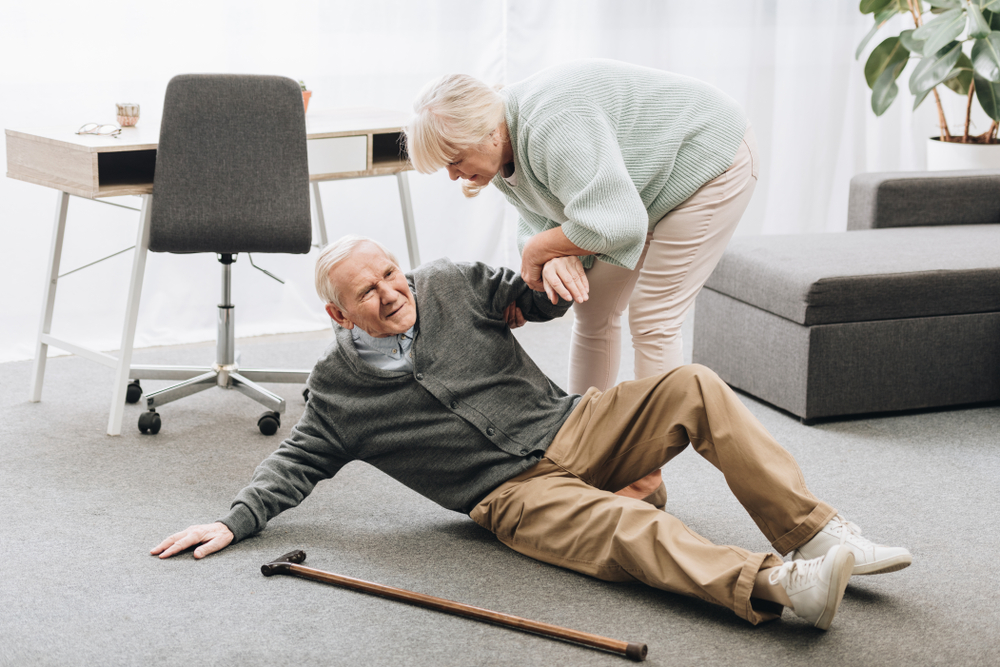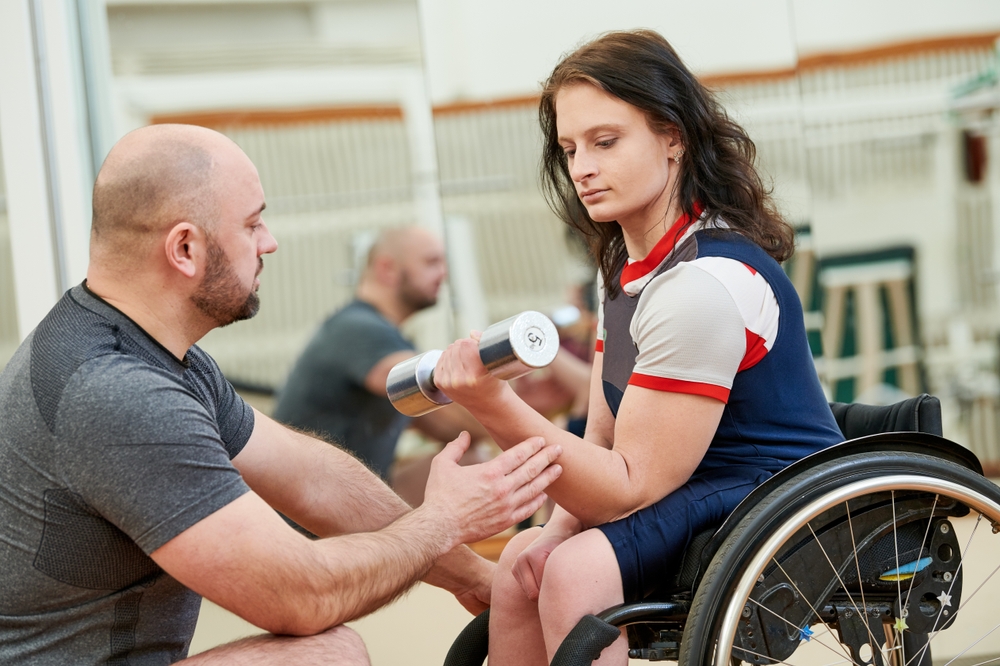Make an Appointment
In most cases, an all-around fitness program is going to be your best bet when it comes to soccer training. While cardio is obviously important to be a killer soccer player, it’s important not to overlook how much strength training will up your game.
Here, we’re going over different types of soccer strength training exercises, how to train for soccer throughout the year, and some example exercises for both strength and cardio in soccer.
Types of Soccer Strength Exercises
There are three types of strength you’ll want to understand when it comes to soccer strength training: absolute strength, muscular power, and strength endurance.
Absolute and Maximal Strength
Absolute or maximal strength refers to the maximum amount of strength a muscle can exert during a single motion. For example, someone who can leg press 100 kg has more absolute strength than someone who can only leg press 80 kg.
Soccer players benefit from increasing their absolute strength in myriad ways. Generally speaking, absolute strength is the foundation of your muscular speed and power.
But, it doesn’t account for time. So, you might have the absolute strength to press 100 kilos but if it takes you 10 seconds to do so, it won’t serve you too well on the soccer field if someone has that amount of strength but can complete the exercise in only 5 seconds, for example.
Muscular Power
Muscular power, on the other hand, does account for time**. It’s the combination of absolute strength and movement speed to help train your body to produce explosive energy with the strength to back it up.**
On the soccer field, you need to be able to sprint at the drop of a hat and make quick turns when your opponent shows up. These moves require soccer players to not only harness a lot of muscular strength, but they also need to maintain speed and flexibility.
Training with programs that encourage both strength and efficiency will add to your overall muscular power.
Strength Endurance
Strength endurance refers to what many people know as cardio fitness. It’s the ability to perform repeated movements at a high-intensity for an extended period of time.
Since soccer players are required to do a lot of running and difficult footwork, strength endurance will prove to be, like muscular power, more important the absolute strength.
Optimal Soccer Strength Training Program
Training to play soccer at a high level should be recognized as a long-term goal. With three different types of strength training to work on, it requires a significant time investment and a customised program to start seeing results.
Here’s what our Physio Inq sports physiotherapists would recommend.
Off-Season
Since you’ve been using your dominant foot and leg to maneuver the ball all season, it’s likely that some muscles are feeling the effects of overuse and strain while others might be weaker and underutilised.
During the off-season, this is your opportunity to build functional strength. After you’ve rested up at the close of a busy season, it’ll be time to kick things back into gear. That means rebalancing and preparing your body for more intense training later on.
A good place to start when it comes to functional fitness is at your core. It’s where everything else stems from and it needs to be strong to help you build from there. You might also employ some rehabilitation techniques for certain muscles that need time to rebuild and an overall moderation workout plan during the off-season.
Early Pre-Season
As the off-season draws to a close and the pre-season begins, it’s time to kick things up a notch. You’ve rehabilitated and rebalanced your body so now it’s ready to take on more strenuous workouts.
Now, you’ll be working on building more absolute or maximal strength. Although muscle power is the ultimate goal in a soccer training program, building absolute strength needs to be developed first.
During this phase, you’ll be doing more weight training than you might be used to, pushing your limits and building a solid baseline. If you start this kind of training sooner than later, it will give you more time to convert this absolute strength to muscular power by the time the season starts.
Late Pre-Season
As the season approaches, it’s now time to work on that muscular power. Here, you’ll convert your gains in absolute strength into power by working on speed, agility, and muscular endurance without sacrificing the strength behind the movement.
It’s during this phase that you’ll swap out those weight sessions for HIIT sessions and shift your focus to more explosive power moves that will help you on the field.
In-Season
During the soccer season, the best thing you can do for your body is to avoid overdoing it. You’ll be playing a lot as it is without any added training so when you are in the weight room or at the gym, it’ll be important not to go too hard and risk an injury.
For the most part, you’ll want to focus on actual soccer drills to help your game and incorporate specific soccer strategies to make you a better player. Trust that all the training you’ve done in the off-season and pre-season has paid off.
Stay in tune with where your weaknesses are and continue to train in those areas but don’t underestimate the importance of rest and recovery.
Strength Exercises for Soccer Players
Now that you know what kinds of strength soccer players will benefit from, it’s time to talk about a few examples of exercise to achieve those goals. Here’s what you can incorporate to increase strength.
Weight Training
Weight training is probably the most obvious way to build muscle and become stronger. Exercises like leg presses, bench presses, tricep pulls, bicep curls, and other weighted exercises will be beneficial to improving absolute strength.
Core Stability
Everything stems from the core so strengthening your abdominal region will be imperative to better performance on the soccer field. Exercises like crunches, sit-ups, leg lifts, and planks can help.
Plyometrics
Plyometrics refers to jump exercises including:
- Skipping
- Jump squats
- Jump lunges
- Burpees
- Clap push-ups
You may presume that all this jumping would be more of a cardio exercise, and while it does help with your cardio fitness, it’s mostly good for your tiny twitch muscle fibres that are connected to muscular power.
Source: Fira Football Fitness
Soccer Cardio Exercises
The other side of the soccer fitness coin is cardio. Again, all exercise has an aspect of cardio training but the following exercises are more specifically for endurance.
Circuit Training
Especially beneficial for soccer players, circuit training allows you to set up any number of different exercises. You travel around doing each exercise for a set time before moving onto the next. Circuit training allows you to train many different muscle groups in the same session while boosting your heart rate.
HIIT
HIIT stands for high-intensity interval training. It’s an amazing form of cardio training where you alternate between states of maximum effort and states of low effort. The point is to train your body to recover more quickly between the cycles of intense effort and is fantastic for soccer players.
Overall, one type of training isn’t more important than the other. It’s a matter of building your strength first and incorporating cardio later to give you that muscle power soccer players are looking for.
Source: FourFourTwo
Other Soccer Resources
If you’re looking for a personalised exercise plan, come see us at Physio Inq where our Sports Physiotherapists and Exercise Physiologists will be able to create a program that’s catered to your body and your goals. We’ll work with you on building strength and endurance while giving you the tools of injury prevention.
Ready to be a beast on the soccer field. Call us today!
Date Published: Thursday, March 26, 2020
Locate a Mobile Exercise Physiology
Service Near me
Get the experience & convinence you deserve to support your or a loved one's allied health needs.
Our Mobile Exercise Physiology team are currently serving & taking appointments in the following states and regions in Australia:
New South Wales
- Blacktown
- Blue Mountains
- Campbelltown And Macarthur
- Canterbury-Bankstown
- Central Coast
- Eastern Suburbs Sydney
- Georges River
- Hawkesbury
- Inner East Sydney
- Inner West Sydney
- Lower North Shore
- Newcastle
- Northern Beaches
- North Sydney
- Parramatta
- Penrith
- South West Sydney
- Sutherland Shire
- Sydney CBD
- The Hills Shire
- Upper North Shore
- Waverley
- Wollongong
Tasmania
Victoria
Need to get into direct contact with ur Client Services team? We're all ears. Call our team directly on 1300 731 733








